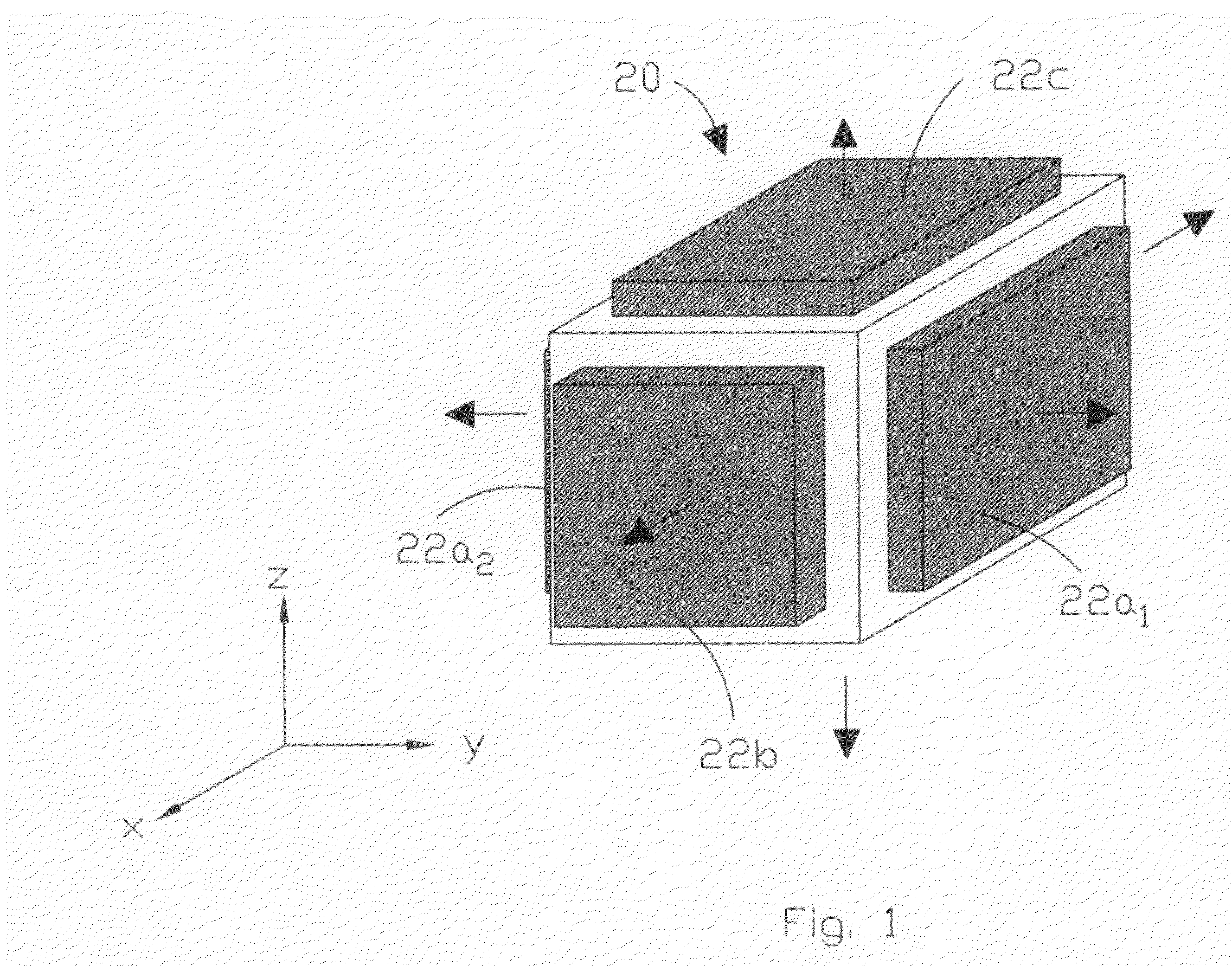Adaptive multi-axis sensor array
a multi-axis sensor and array technology, applied in the field of position determining hardware, can solve the problems of significant limitations of existing position detecting systems such as satellite based systems including gps, vor, cell tower signals, other microwave signals, and the creation of significant distortion in accurate positioning determination, so as to achieve the effect of extreme robustness and reliabl
- Summary
- Abstract
- Description
- Claims
- Application Information
AI Technical Summary
Benefits of technology
Problems solved by technology
Method used
Image
Examples
Embodiment Construction
)
[0037]A schematic depiction of a first embodiment of the adaptive multi-axis sensor array or ensemble of the present invention is depicted in FIG. 1 generally at 20. As shown in FIG. 1, the multi-axis sensor array comprises 3 pairs of opposed piezoelectric oscillators 22. By way of example, oscillators 22a1, 22a2 have primary axes extending in opposite directions along, for example, the y-axis, while oscillators 22b extend along the x-axis and 22c extend in opposite directions along the z-axis. While sensor array 20 is configured to permit data to be gathered regarding all 3 orthogonal longitudinal axes and, by virtue of the paired oscillators 22, all three rotational axes as well, it is envisioned that other applications may only require data gathering to one or two of the principle axes. Accordingly, the invention is directed to a plurality of 2 n piezoelectric oscillators, where n is the number of axes of interest, each piezoelectric oscillator of the plurality of 2 n being one ...
PUM
 Login to View More
Login to View More Abstract
Description
Claims
Application Information
 Login to View More
Login to View More - R&D
- Intellectual Property
- Life Sciences
- Materials
- Tech Scout
- Unparalleled Data Quality
- Higher Quality Content
- 60% Fewer Hallucinations
Browse by: Latest US Patents, China's latest patents, Technical Efficacy Thesaurus, Application Domain, Technology Topic, Popular Technical Reports.
© 2025 PatSnap. All rights reserved.Legal|Privacy policy|Modern Slavery Act Transparency Statement|Sitemap|About US| Contact US: help@patsnap.com



